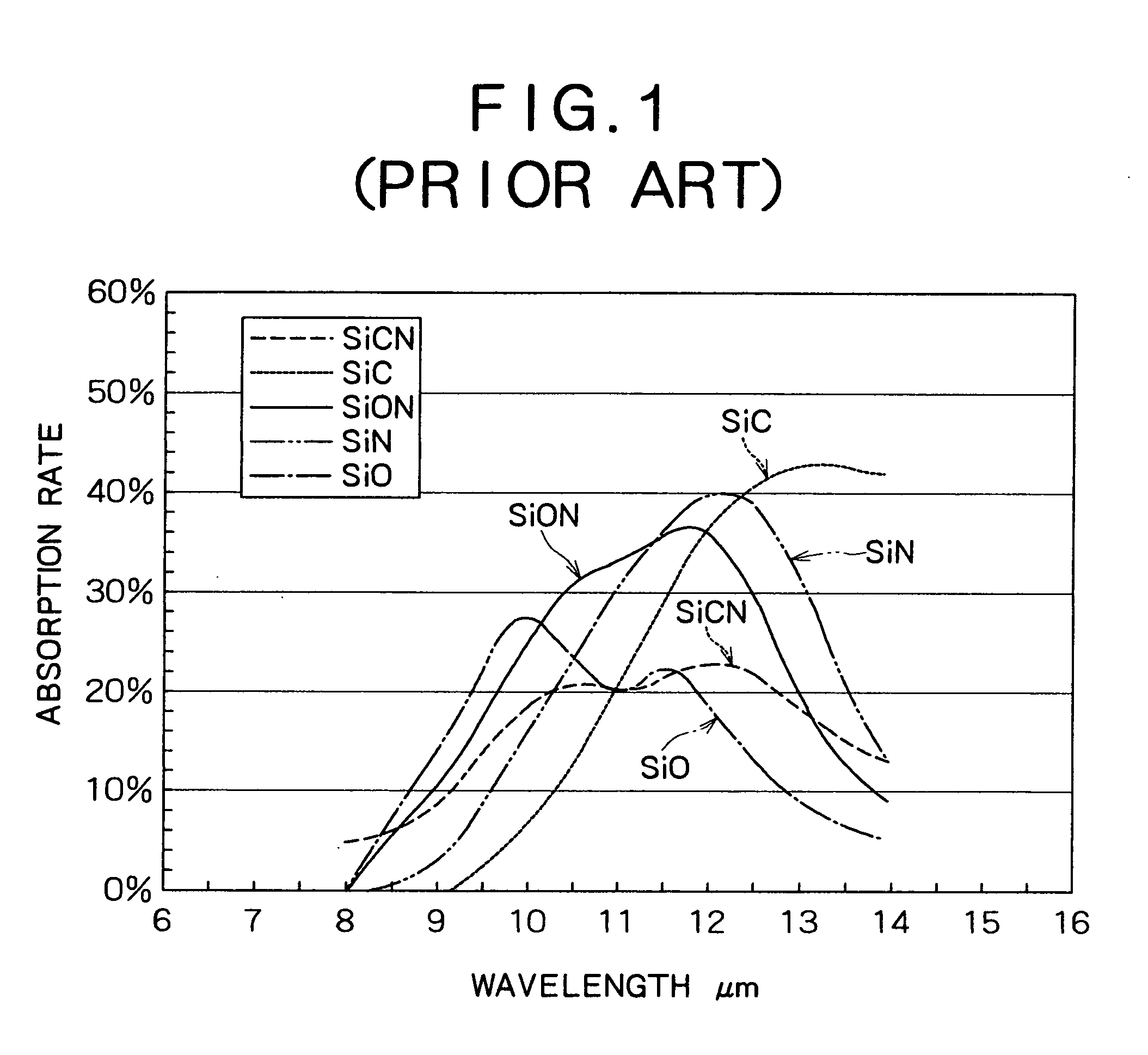Thermal-type infrared detection element
- Summary
- Abstract
- Description
- Claims
- Application Information
AI Technical Summary
Benefits of technology
Problems solved by technology
Method used
Image
Examples
Embodiment Construction
[0030] As described in relation to the prior art, it is important that an infrared absorption film that constitutes a photoreceptor be formed from a material having good infrared absorption characteristics in order to enhance the sensitivity with which a thermal-type infrared detection element detects infrared rays that are incident through the atmospheric window of the 8 to 14 μm waveband. However, the SiO, SiN, SiC, SiON, SiCN, and other materials in conventional use all have the drawbacks of low absorption of infrared rays near 8 to 10 μm, and inability to effectively utilize incident infrared rays.
[0031] As a result of forming an infrared absorption film using various starting materials and measuring the infrared absorption characteristics of the infrared absorption film thus formed in order to overcome the abovementioned drawbacks, the inventors discovered that SiCO obtained by bonding silicon, carbon, and oxygen to each other in a ratio of 1:1:1 is easily formed into a film o...
PUM
 Login to View More
Login to View More Abstract
Description
Claims
Application Information
 Login to View More
Login to View More - R&D
- Intellectual Property
- Life Sciences
- Materials
- Tech Scout
- Unparalleled Data Quality
- Higher Quality Content
- 60% Fewer Hallucinations
Browse by: Latest US Patents, China's latest patents, Technical Efficacy Thesaurus, Application Domain, Technology Topic, Popular Technical Reports.
© 2025 PatSnap. All rights reserved.Legal|Privacy policy|Modern Slavery Act Transparency Statement|Sitemap|About US| Contact US: help@patsnap.com



